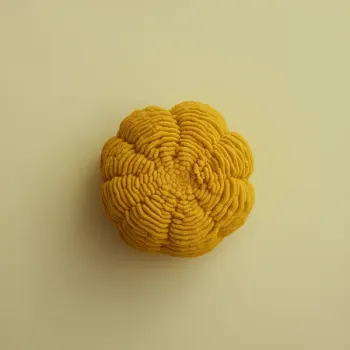Yellow Mustard is a mild, tangy condiment made from white mustard seeds, vinegar, and spices, ideal for classic sandwiches and simple dressings. Dijon Mustard, made with brown mustard seeds and white wine, offers a creamy texture and robust flavor, suitable for gourmet dishes and complex dressings.

Yellow Mustard, often referred to as American mustard, is a bright yellow condiment made primarily from white mustard seeds mixed with vinegar, spices, and sometimes a hint of sugar. It's known for its mild taste and smooth texture.

Dijon Mustard originates from Dijon, France, and is made from brown or black mustard seeds combined with white wine, vinegar, and seasonings. It offers a creamy texture and a more pungent, less acidic flavor compared to Yellow Mustard.
The primary differences lie in their ingredients and flavor profiles. Yellow Mustard is milder, slightly tangy, and has a bright yellow color due to turmeric. Dijon Mustard, on the other hand, is creamier, more robust, and less vinegary, with a subtler color and a hint of spice from the use of wine.

Your ultimate Recipe Box, Meal Planner, and Cooking Class all in one
Best for classic deli sandwiches, hot dogs, and burgers. Its tanginess cuts through rich meats and cheeses, and it adds a bright, zesty flavor without overpowering other ingredients. Ideal for gourmet sandwiches, paninis, and wraps. The complexity of Dijon enhances the flavors of artisanal breads, cured meats, and strong cheeses, giving depth to every bite.
Adds a light tang and thickness to vinaigrettes and creamy dressings. It's perfect for simple, everyday salads and coleslaws. Brings a sharp, sophisticated flavor to dressings, emulsifying ingredients for a smooth texture. It's excellent in dressings for more complex salads with bitter greens or robust ingredients.
Works well in a marinade for chicken or pork, adding a subtle zest without dominating the dish's flavor profile. Imparts a bold, rich flavor in marinades, especially for beef or lamb. It helps to tenderize the meat while infusing it with depth and character.
Suitable for sweet and tangy glazes, particularly in down-home cooking or comfort food recipes that call for a touch of mustard flavor. Preferred for creating rich, creamy sauces or elegant glazes that pair with sophisticated dishes, enhancing the overall savoriness.
Both mustards offer low-calorie options with a beneficial amount of nutrients, including antioxidants and anti-inflammatory compounds.
| Nutrient | Dijon Mustard ( per Tablespoon ) | Yellow Mustard ( per Tablespoon ) |
|---|---|---|
| Fat | 1.1g | 0.7g |
| Sodium | 120mg | 57mg |
| Calcium | 9mg | 7mg |
| Protein | 0.8g | 0.5g |
| Calories | 15 | 9 |
| Carbohydrates | 0.4g | 0.6g |
Yes, Dijon mustard is generally considered to have a stronger, spicier flavor compared to the milder, tangier taste of yellow mustard.
Yes, but start with a smaller amount and adjust to taste, as Dijon is more potent.
Dijon mustard is made with brown or black mustard seeds and white wine, whereas yellow mustard is usually made with white mustard seeds and vinegar, and often contains turmeric for color.
Yes, you can use yellow mustard in a vinaigrette, but it will result in a milder flavor profile.
The nutritional differences are minor, but Dijon mustard typically contains slightly more calories and sodium per tablespoon than yellow mustard.